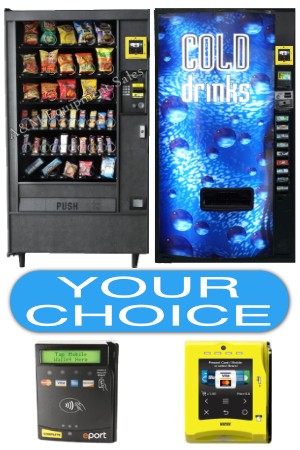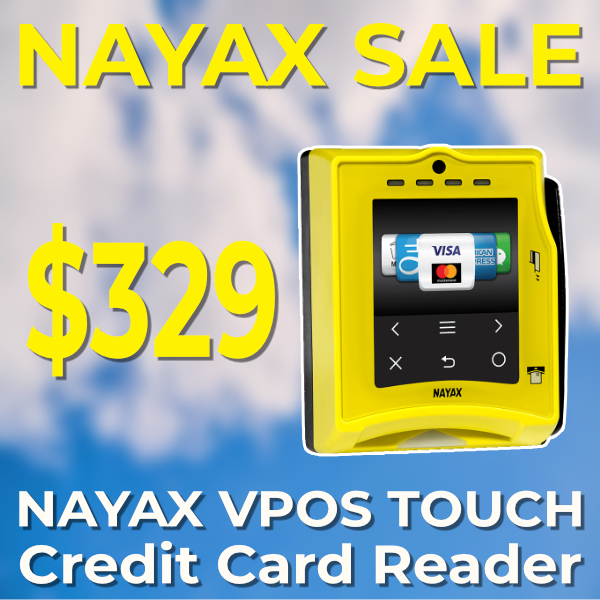
- Physical location of the machines – the address of the place and their location within the building
- Can you service multiple accounts from the place where you park the truck at a stop on the route?
Another factor: is it profitable to service all of the machines at a single stop or not?
There are a few ways to run vending business service scheduling efficiently; one way is scheduling by time (every day we’ll service the machines). Another way is to schedule servicing of machines based on profit for that machine.
Servicing all machines at a location can be unprofitable due to the time it takes to service the machine and the potential of creating a service call due to operator mistakes.
Every time you open the machine up, you open the possibility of creating a service call on that machine: the computer resets, validators and changers cycle, wires get moved, things happen. I’ve received calls, “the guy was just here and now the machine doesn’t work.”
You can service three drink machines in an hour vs. one snack machine and one drink machine. You’ll be thinking about these kind of things when you schedule on profit rather than time.
What is the cost to run the truck for one hour? That’s the cost of a service call.
Ask yourself, how do I get the most money out of those machines on the service schedule? Ask people who are accounting oriented to get an idea of what will work for you.
The benefits of this concept will pay off big when it gets implemented.
Episode Transcript:
Tom Shivers: Hi, I’m Tom with The Vending Business Show, here again with Larry Towner, the vending business consultant. And today we’re talking about Vending Business Service Scheduling for profit, so what’s that about, Larry?
Larry Towner: Well, let me ask you a question, Tom, because you know I’m big on questions. Do you like to make profits?
Tom Shivers: Oh, yeah.
Larry Towner: Are profits dependent upon being operationally efficient?
Tom Shivers: Most of the time, yes.
Larry Towner: Most. Probably all of the time. But in the vending business, so this topic of conversation we’re gonna talk about is how you set up Vending Business Service Scheduling , for the aspects of the vending business, which largely has to do with your route scheduling, and also your service scheduling to a lesser degree. But they need to be intertwined together, so I’m gonna kind of put them together.
Larry Towner: As you all know, if you’re in the vending business, you’re gonna have a series of vending accounts, as it were, that are gonna need to be serviced on a regular basis. And your scheduling will determine how profitable you are in your endeavors to go out and service these accounts.
Larry Towner: So Tom, just offhand, you’re associated with the vending business to a degree. What do you think are some of the factors that play into running a vending route?
Tom Shivers: Well the location of the machines from where your operation is located. Ah, how far you have-
Larry Towner: It’s the physical location of the machines. Right? And that would include the address of the place. And I’m gonna throw in there also the fact of where are they in the building? There’s a difference between an operation that has machines that are close to the door, say up on the 30th floor of a building is a bit of a difference. So that’s one of the things.
Larry Towner: What other things do you think matter?
Tom Shivers: Just having the capability of servicing a number of accounts on one route with one shot basically.
Larry Towner: At one stop if you want to call it that. Meaning can you service multiple accounts via one place where you park the truck, right?
Tom Shivers: I got it right.
Larry Towner: Yeah. So that’s one of the things. What about the number of machines in an account? Do you think that that matters?
Tom Shivers: Oh yeah. The more you’re servicing in one stop, the better probably.
Larry Towner: Well that’s, the question is, that’s the interesting part. Is that the truth or not? So let’s go through just some of the ideas. These are great ideas, by the way. And these come from a guy that’s been associated with the vending industry, but is not in it. Because Tom’s not technically in the vending business. He’s never run a route. Just so you all out there in the world know that.
Larry Towner: But Tom’s specialty is Internetesio stuff. So if you need to get ahold of him, you can contact these websites and things like that.
Larry Towner: But anyway, let’s go into the operational things. Now when we run our businesses, we want to be efficient in our operations. There’s a couple of different ways to go about it. Some of our people in the vending business schedule by time. Meaning that they’re gonna go in and they’re gonna service these accounts on a very regular basis, be it every day, twice a day, once a week, every two weeks. Things like that. That’s one concept of how to do your scheduling. And it’s an effective concept for an awful lot of people.
Larry Towner: There are other ways to do it. The way that I always did my scheduling was, I based it on the amount of money on a gross sales figure based on a profit figure, that was determined is that’s when I did my scheduling. And I actually broke that down per machine. And as Tom, you said earlier, you want to go in and you want to service as many machines as possible.
Larry Towner: I found in my research when I did all of my stuff and then talking to a lot of people, that there were times that you only might have serviced one machine at a stop because you were gonna take enough money out of that machine to service, to make that stop profitable.
Larry Towner: But the actual act of opening the other machine and servicing that other machine turned that account into an unprofitable stop because the amount of time it took you to actually open the machine and the amount of service calls that were created by opening the machine.
Larry Towner: Tom, why do I say that? Do you have an idea of what I just said? That opening a machine creates a service call?
Tom Shivers: That’s an interesting one, Larry. I’m not sure what you mean there.
Larry Towner: Well I think if you’re in the vending business and you go out and you look at the number of machines you have. And this information comes through the various different organizations, NAMA and things like that. But it also comes from other advisors and other business people too that are in the vending business. Is that every time you open a machine up, you open the possibility for there being a service call on that machine. Because things happen when you open the door. The computer resets. The validaters and changers cycle. It’s just things happen. Wires get moved. And things get pinched. And stuff happens.
Larry Towner: And sometimes if part of your system isn’t to actually test vend the machine before you leave, which by the way takes time, you might create service calls. I can tell you from personal experience, every time a machine door opened, I got a huge number of service calls where, “The guy was just here and now it doesn’t work.”
Larry Towner: And if you’ve not experience that, you will in time. So it requires a test vending period. Anyway, so you can go and you can service one machine, you take your gross amount out. The other machine now, I’m thinking of one account I had in particular. We serviced the account every week. We only serviced the snack machine every two weeks. Because it just didn’t pay to open that machine every single week.
Larry Towner: These are things that, from a profit standpoint, it was, you have to understand how things work. Plus, just servicing that soda machine was bing, bing, bing, in and out. You could be in and out of that machine in 20 minutes. Where to service the snack machine and the soda machine was gonna take him an hour. He could get to the next drink machine and service that one and be gone. He could do three drink machines in an hour versus one snack machine and one drink machine.
Larry Towner: These are the concepts you have to think about when it goes to scheduling, when you schedule on profit. Or on gross. I did it on gross sales. And I used a figure of, I looked at my local HVAC guy, right? The guy running the heating, ventilating and air conditioning truck, the guy that’s out there running. What’s he charge you?
Larry Towner: Tom, what’s an HVAC guy charge you to make a service call to your house?
Tom Shivers: Maybe 300 dollars.
Larry Towner: What’s a service call? Just showing up.
Tom Shivers: A service call is gonna be at least 75 to 100 dollars.
Larry Towner: Yeah. 75 to 100 dollars. That’s essentially his cost to run the truck for an hour. That’s how I did my figures. Anyway, think about this stuff, folks. Put your scheduling into that kind of mode. How do I get the most money out of those machines on the service schedules? Take a hard look at it. Ask people that are accounting oriented. Ask people that are really numbers oriented. They’ll give you an idea of what really works for you.
Larry Towner: It could be just time. It could be just time. If you’re going to a stop every day, it’s just time. You know, if your accounts are big enough that you can go every day, go every day. But gee, and on big, big accounts sometimes you have to go twice a day. What time of the day do you go? When do you get that maximum amount of money out of it? It’s a concept to think about. It boils into a calendar and you get a lot of pre-planning time out of it. And let me tell you, the benefits will pay off big. Big, big, big, big, big. So.
Larry Towner: Questions, Tom?
Tom Shivers: No. That was excellent, Larry. Thanks for sharing that. I know a lot of people are gonna find this very useful. What’s next? What are we gonna look at next?
Larry Towner: Well I thought we would do, in the future I know we’re gonna do a sales and marketing calendar. We’re gonna do, and there’s a difference between a sales and marketing calendar. We’ll probably do a long term calendar. What are some of your long term prospects? And things like that. There’s so many things that we need to integrate into a calendar, that we’ve got, as I say, this is a series. We’ve got a bunch of things. But we’re gonna talk about some sales and some marketing concepts coming up very soon.
Tom Shivers: Alright. And if you haven’t subscribed yet, you’ll want to do that. You been watching The Vending Business Show, a publication of A & M Equipment Sales.
To see some of available equipment go tohttps://www.amequipmentsales.com/prodcat/new-vending-machin



